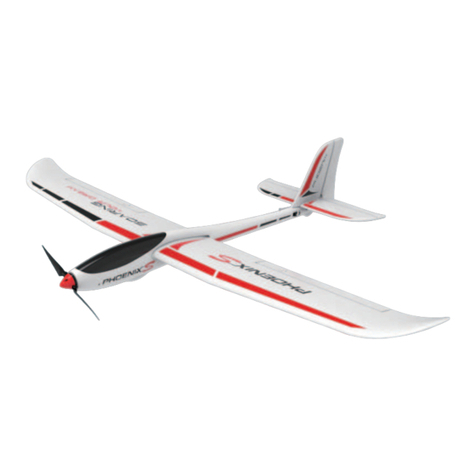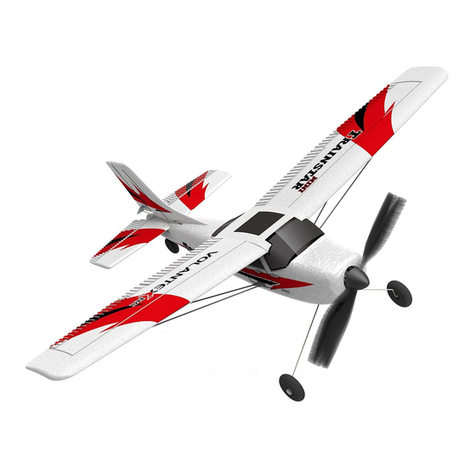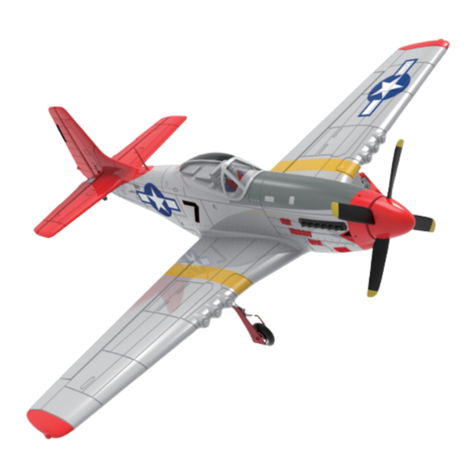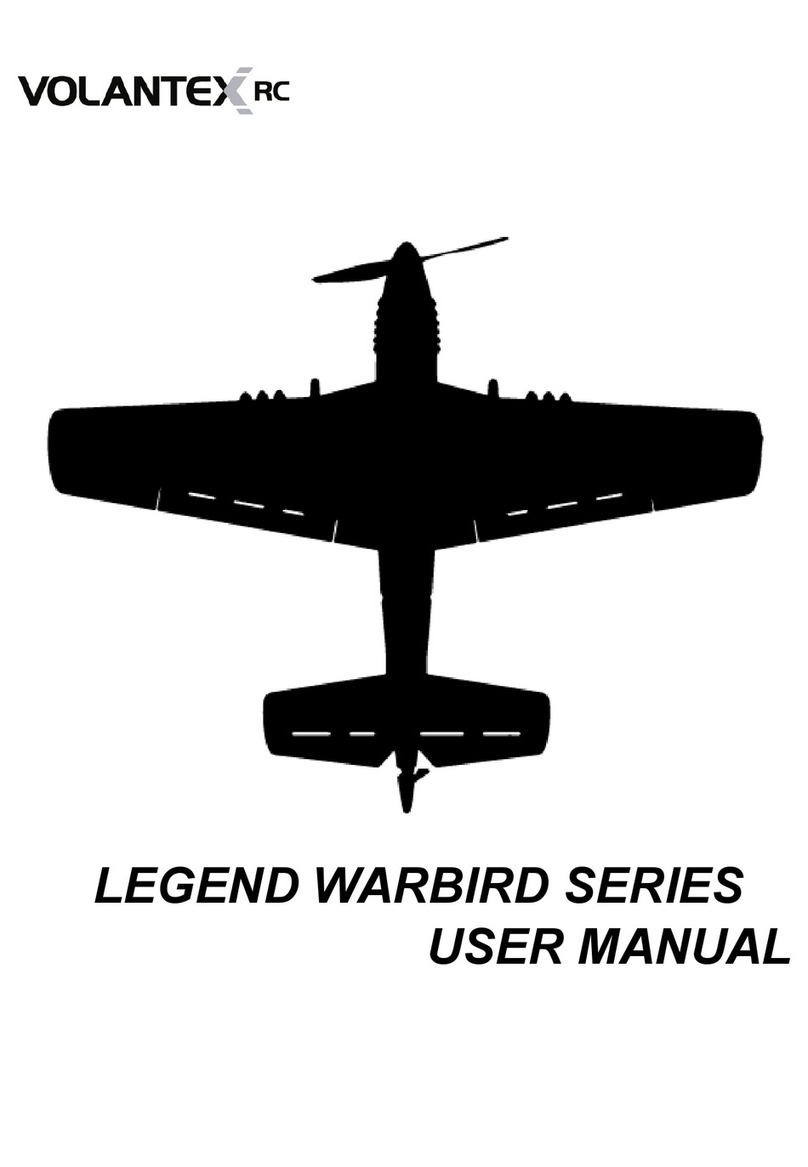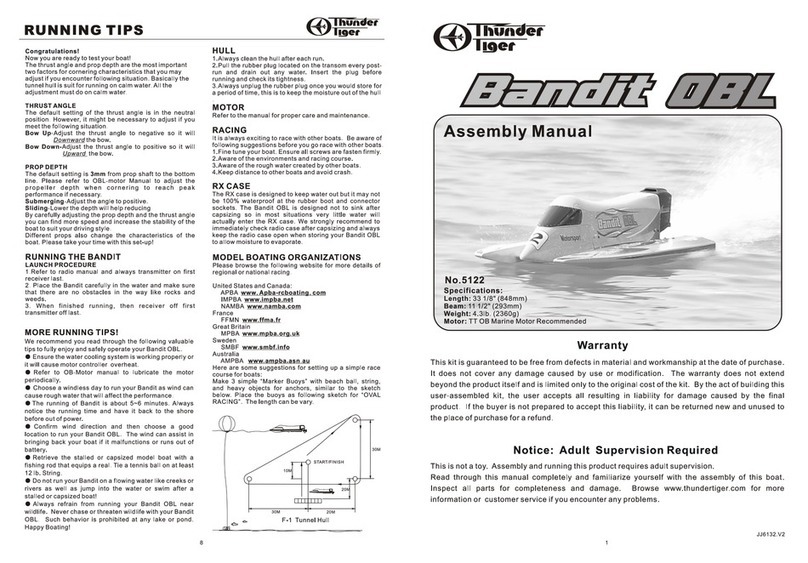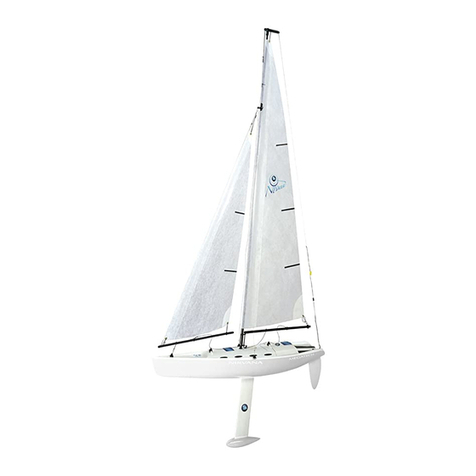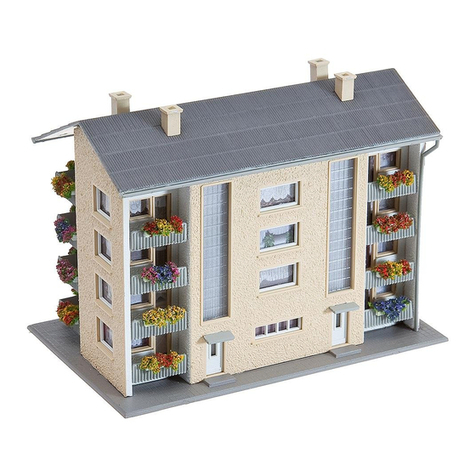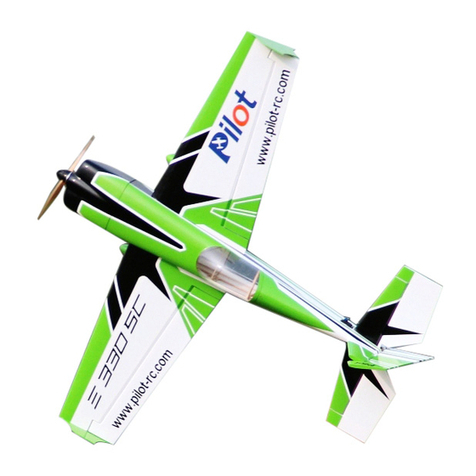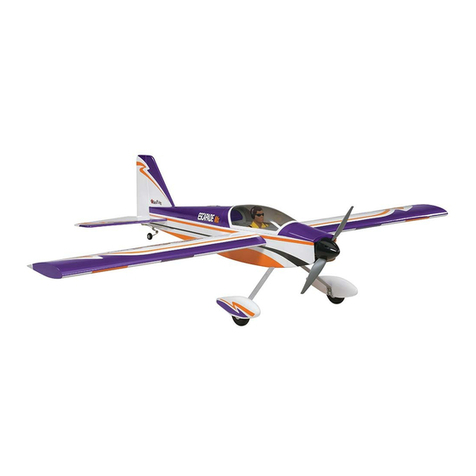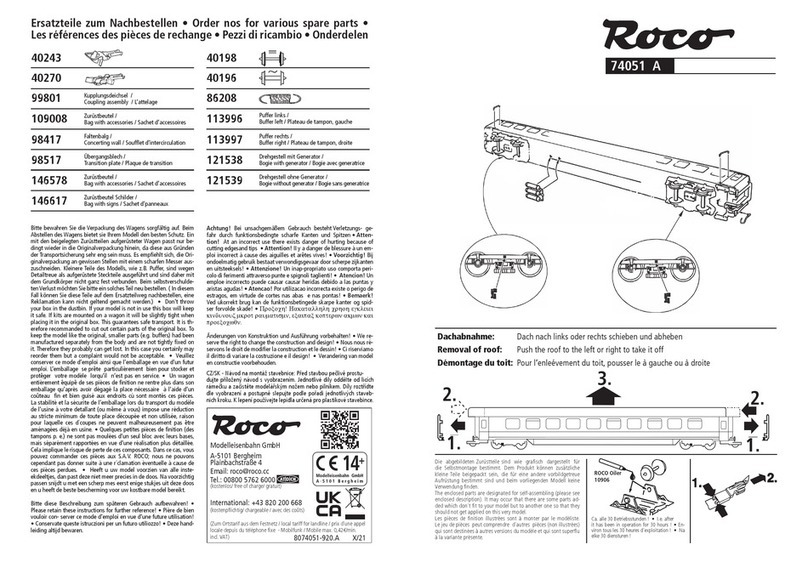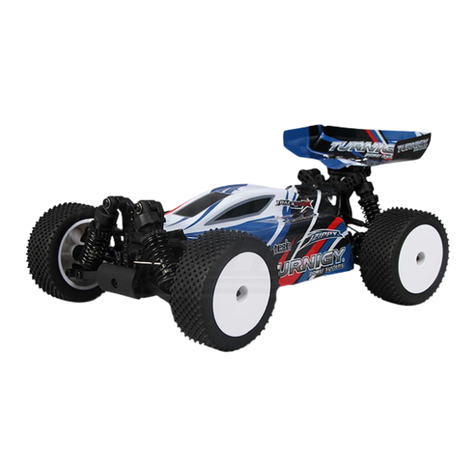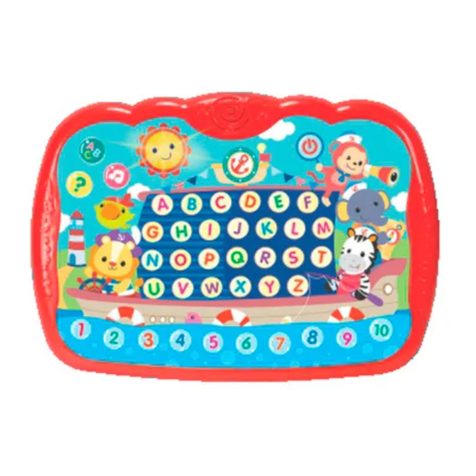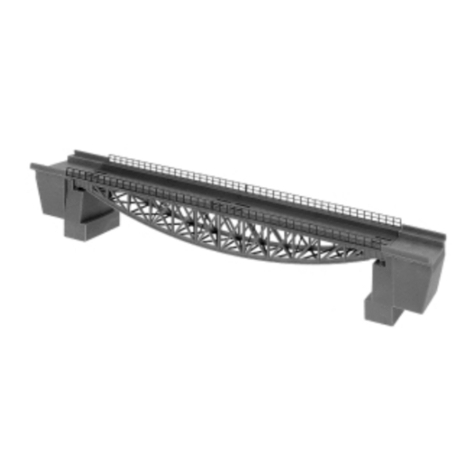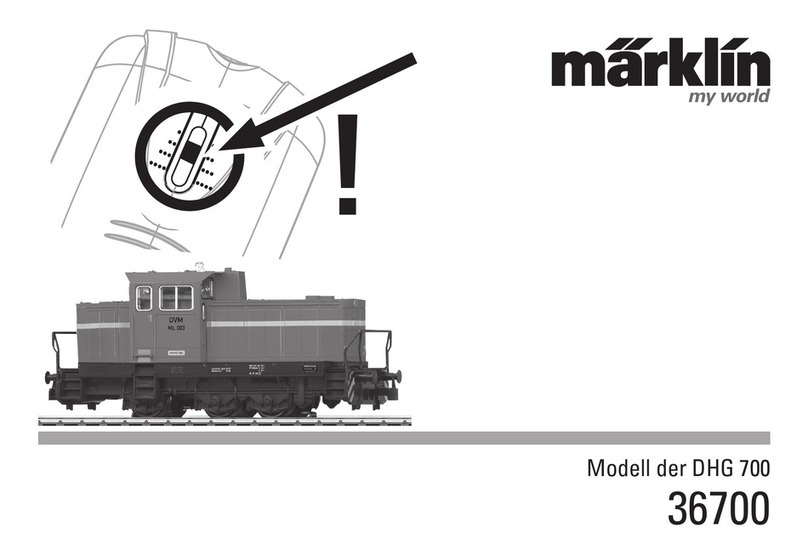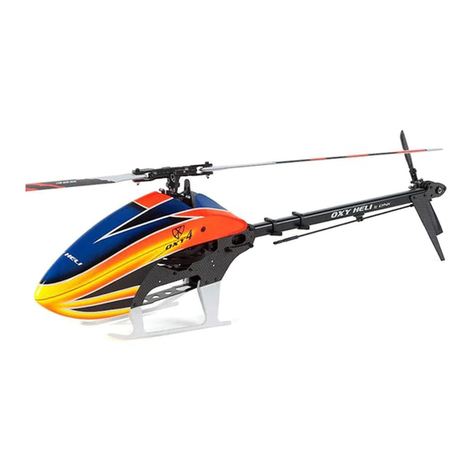EXHOBBY Mini Rock Crawler Series User manual

1:24 Mini Rock Crawler Series
User Manual

2 / 12
The following terms are used throughout the product literature to indicate various levels of potential harm
when operating this product:
NOTICE: Procedures, which if not be properly followed, will create a possibility of physical property
damage AND or possibility of injury.
WARNING: Read the ENTIRE instruction manual to become familiar with the features of the product
before operating. Fail to operate the product correctly can result in damage to the product, personal
property and cause serious injury.
This is a sophisticated hobby product. It must be operated with caution and common sense and requires
some basic mechanical ability. Fail to operate this product in a safe and responsible manner could result
in injury or damage to the product or other property. This product is not intended for use by children
without direct adult supervision. Do not use with incompatible components or alter this product in any
way outside of the instructions provided by VolantexRC Co.,Ltd.. This manual contains instructions for
safety, operation and maintenance. It is essential to read and follow all the instructions and warnings in
the manual, prior to assembly, setup or use, in order to operate correctly and avoid damage or serious
injury.
AGE RECOMMENDATION: NOT FOR CHILDREN UNDER 14 YEARS. THIS IS NOT A TOY.
Safety Precautions and Warnings
WARNING
As the user of this product, you are solely responsible for operating in a manner that does not endanger
yourself and others or result in damage to the product or the property of others.
- Always keep a safe distance in all directions around your boat to avoid collisions or injury. This boat is
controlled by a radio signal subjuct to interference from many sources outside your control. Interference
can cause momentary loss of control.
- Always carefully follow the directions and warnings for this and any optional support equipment(chargers,
rechargeable battery packs etc.).
- Always keep all chemicals, small parts and anything electrical out of the reach of children.
- Always avoid water exposure to all equipment not specially designed and protected for this purpose.
Moisture causes damage to electronics.
- Never place any portion of the boat in your mouth as it could cause serious injury or even death.
- Never operate your boat with low transmitter batteries.
- Always keep your boat in sight and under control.
- Always use fully charged batteries.
- Always keep transmitter powered on while boat is powered.
- Always remove batteries before disassembly to avoid touching throttle and cause damage.
- Always keep moving parts clean.
- Always keep parts dry.
- Always let parts cool after using before touching.
- Always remove batteries after usage.
- Always ensure failsafe is properly set before running.
- Never operate a boat with damaged wiring.

3 / 12
Battery and Charging Warnings
Box Contents
CAUTION: All instructions and warnings must be followed exactly. Mishandling of Li-Po/Li-Ion/Ni-Mh
Li-Ion/Ni-Mh battery.
- By handling, charging or using the included battery, you shall assume all risks associated with Li-Po/Li-
Ion/Ni-Mh battery.
- If at any time the battery begins to balloon or swell, discontinue use immediately. If charging or
discharging, you should discontinue and disconnect.
- Always store the battery at room temperature in a dry area for best results.
- Always transport or temporarily store the battery in a temperature range of 40-120 Fahrenheit degrees (5-
49 degrees centigrade).Do not store battery or your boat in a car or direct sunlight. If stored in a hot car,
- Always inspect the battery before charging and never charge damaged batteries.
- Always disconnect the battery after charging, and allow the charger cool before next charge.
- Always constantly monitor the temperature of the battery pack while charging.
- ONLY USE A CHARGER SPECIALLY DESIGNED TO CHARGE SPECIFIC BATTERIES.
- Never discharge Li-Po cells till below 3V under load.
- Never cover waning lables with hook or loop strips.
- Never leave charging batteries unattended.
- Never charge batteries outside recommended levels.
- Never attempt to dismantle or alter the charger.
- Never allow minors to charge battery packs.
- Never charge batteries in extrmely hot or cold places(recommended between 40-120 Fahrenheit degrees
/ 5-49 degrees centigrade) or in direct sunlight.
1. Assembled Vehicle
2. Radio Transmitter
3. Lithium Battery
4. USB Charger
Note: The Photo shown as an example for all mini rock crawler series. The actual product may vary slightly
from manual according to the model you purchased.

4 / 12
1. Remove the vehicle body.
2. Install the vehicle battery.
3. Connect the vehicle battery to the receiver.
4. Press the receiver power button to power on the vehicle.
4. After receiver is bound(see the next chapter), install the
vehicle body and secure by the clips.
Vehicle Batteries Installation
Charging Instruction
For USB charger -
1.Power off your vehicle.
2.Carefully plug the charger into the USB port on
your computer or USB adaptor.
3.Connect the battery into the charger.
4.While charging, the red LED charge indicator will
be solid on. The charging process takes approximate
3.5 hours. For safety reasons, never charge the
battery over 4 hours.
5.When the battery is fully charged, the LED charge
indicator will be off. Lithium Battery
LED Charge
Indicator
Clips
Secure
Position
Power
Button
For charging the included lithium battery, you can only use the included charger or a suitably compatible
lithium battery charger.
Charging the lithium battery using a none lithium battery compatible charger (such as a NiCd or NiMH
battery charger), or even a different lithium battery charger with the incorrect settings, may result in damage
to the battery or even resulting in property damage and/or personal injury.
CAUTION: You must be careful to ensure proper polarity before making the connection.
Follow below steps to charge the lithium battery with the included charger.
Binding is the process of programming the receiver to
recognize the GUID (Globally Unique Identifier) code of
a single specific transmitter. When a receiver is bound to
a transmitter, the receiver will only respond to that specific
transmitter. If you need to rebind, follow the below steps.
1. With the transmitter switched OFF.
2. Press the power button on the receiver power on the vehicle,
then turn on the transmitter within 5 seconds.
3. The receiver LED will flash for 3-8 seconds to bind
automatically.
4. After the receiver LED turns to solid, it is bound to the
transmitter.
Receiver Binding
USB Charger

5 / 12
Antenna
Not Functional
Steering Trim
Steering Dual Rate
Throttle Dual Rate
Steering Reverse
Indicator LED
Steering Wheel
Throttle Trigger
Power Switch
Transmitter Instruction

6 / 12
ON / OFF Switch Battery LED Monitor
Slide the switch
up to turn on the
transmitter, swich
down to turn off.
Dual Rate
If the direction of the servo is wrong, slide the steering
reverse switch to the opporsite direction.
Adjust the steering dual rates to gain the proper
steering ratio. Switch left / right to gain smaller /
larger steering angle.
Adjust the throttle dual rates to adjust the top speed
of throttle. It is initially set at 100% throttle, switch
left to slow down the top speed.
Steering Reverse Switch
The steering trimmer is used to adjust the central
position of servo if the vehicle can’t run straightly.
Switch left / right to adjust servo central position to
left / right.
Steering Trim
Steering Trim
Steering Reverse Switch
Steering Dual Rate
Throttle Dual Rate
Solid red:
Battery is in good condition(above 4.3V).
Flashing red with beepings:
Battery is at low voltage. Replace batteries.

WARNING:DO NOTTURN OFF THE TRANSMITTER BEFORE UNCONNECTING BATTERY OF
RECEIVER, OR THE RECEIVER MAY PICK UP STRAY SIGNALS AND RUN OUT OF CONTROL TO
CAUSE ACCIDENT!
Motor Care
Prolong motor life by preventing overheating conditions. Undue motor wear results from frequent turns, stops
and starts, pushing object, boating in rough or vegetation and boating continuously at high speed.
Over-temperature protection is installed on the ESC to prevent circuit damage, but cannot protect the motor
from pushing against heavy resistance.
After Driving
1. Power off the ESC.
2. Disconnect the vehicle battery, and put it in a cool,dry place.
3. Power off the transmitter.
4. Remove batteries from transmitter.
7 / 12
To move forward the vehicle, pull the throttle trigger
as shown. To move backward the vehicle, push the throttle
trigger as shown.
Operation Instruction
Rotate the steering wheel clockwise /
counter-clockwise while pulling the trigger to make
a right / left turn.

Problem Possible Cause Solution
Vehicle does not move
Loss of vehicle control
Steering and/or throttle
function is reversed
Batteries are not installed properly in
the transmitter Ensure the transmitter batteries are properly
installed in correct polarity
The transmitter or the vehicle battery is
low power Make sure you use full power transmitter
and vehicle batteries
Damaged motor or servo Replace damaged parts
ESC is shut down by heat protection
circuit Allow the ESC to cool down completely
Weak or no batteries in the transmitter
or vehicle Make sure you use full power transmitter
and vehicle batteries
Neutral or trim position is incorrect Adjust the steering trim
Troubleshooting Guide
Exploded Views
8 / 12
Receiver and/or battery not connected
properly
Servo travel is reversed at the
transmitter Set the transmitter servo reversing switch to
the correct position
Motor wires are not connected properly Check all motor wires for correct polarity and
secure connection
Check all receiver and battery connections

9 / 12

10 / 12

11 / 12

Table of contents
Other EXHOBBY Toy manuals
